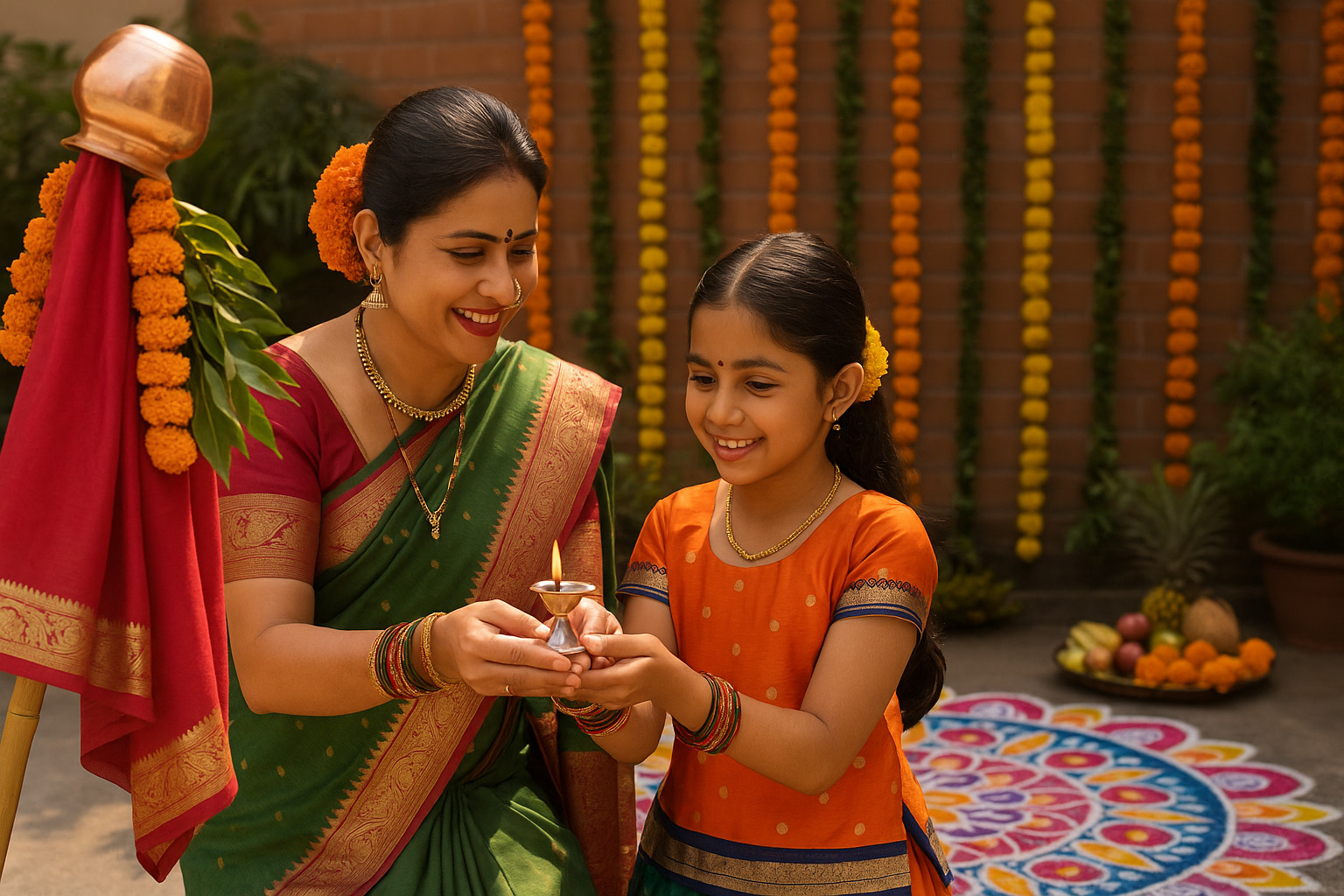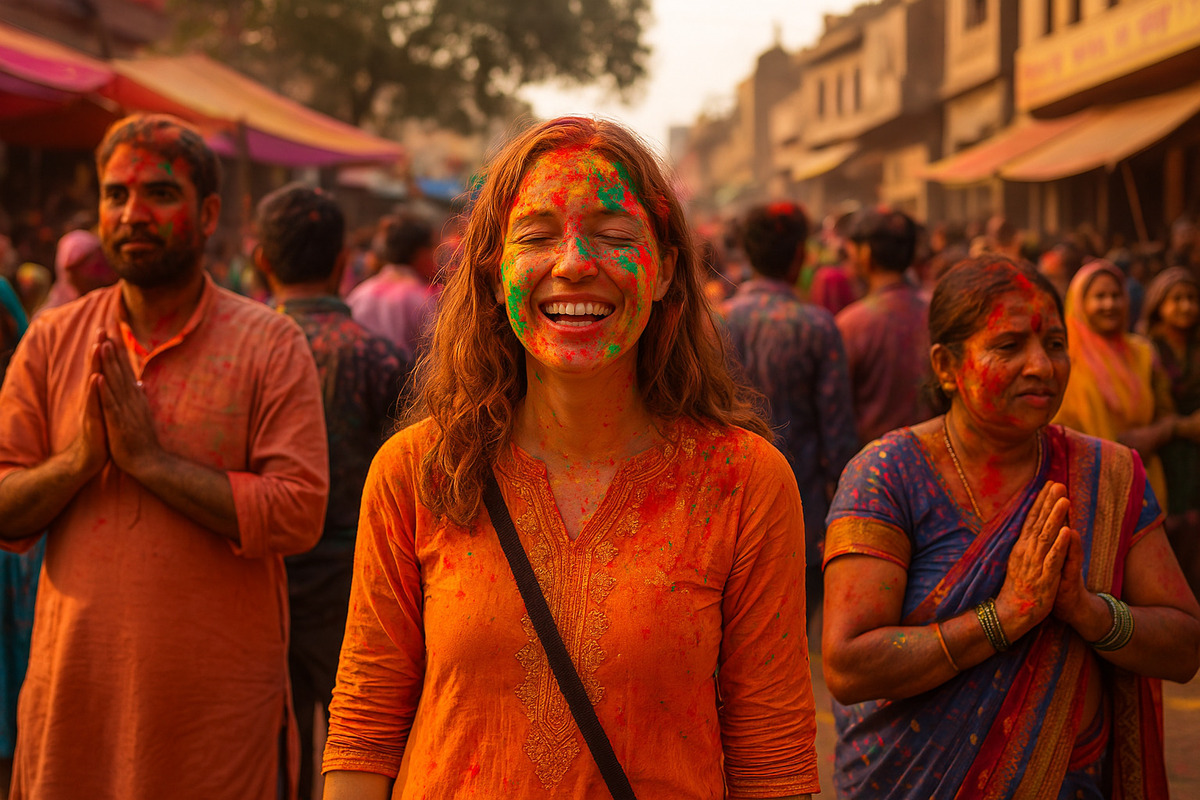
India doesn’t follow a single calendar. That’s why “New Year” is not a one-day nationwide event but a collection of celebrations spread across regions, languages, and traditions. From spring harvests to lunar transitions, each state welcomes the New Year with rituals rooted in seasonal cycles and ancient customs.
Here’s how different parts of India celebrate their own version of the New Year.
1. Ugadi – Andhra Pradesh, Telangana, Karnataka
When: March–April (Chaitra month, Hindu lunisolar calendar)
- Houses are cleaned and decorated with mango leaves and rangoli.
- A dish called Ugadi Pachadi is prepared, symbolizing six emotions through ingredients: neem (bitter), jaggery (sweet), tamarind (sour), raw mango (tangy), salt, and green chili.
- People read out the Panchangam (new astrological forecast) for the year ahead.
2. Gudi Padwa – Maharashtra
When: Same day as Ugadi
- A Gudi (bright silk cloth tied to a bamboo with neem leaves and an inverted copper pot) is hoisted outside homes.
- It represents victory, prosperity, and the start of spring.
- Dishes like Puran Poli and Shrikhand are served.
3. Baisakhi – Punjab
When: April 13 or 14 (solar New Year)
- Celebrated as the harvest festival for Rabi crops.
- Marked by traditional Bhangra and Gidda dance performances.
- Gurudwaras are filled with kirtans, and langars (community meals) are offered.
- It also commemorates the foundation of the Khalsa Panth in Sikh history.
4. Puthandu – Tamil Nadu
When: April 14
- Households create Kolam (colorful patterns) at the entrance.
- A lamp called Kuthuvilakku is lit, symbolizing hope and renewal.
- People start the day by viewing auspicious items like gold, fruits, betel leaves, and flowers — a ritual called Kani.
- Traditional dishes like Mango Pachadi are prepared.
5. Vishu – Kerala
When: April 14 or 15
- The day begins with Vishukkani — a set of items arranged before a mirror, including rice, fruits, flowers, and coins.
- Fireworks light up the skies, especially in northern Kerala.
- Families prepare a special meal called Vishu Sadhya, served on banana leaves.
6. Bohag Bihu – Assam
When: Mid-April
- Also called Rongali Bihu, it celebrates the Assamese New Year and the onset of sowing season.
- Youths perform Bihu dance and sing traditional songs.
- Bamboo huts are cleaned, and cows are washed and worshipped.
- Dishes like Pitha (rice cakes) and Laru (coconut sweets) are made.
7. Pohela Boishakh – West Bengal
When: April 14 or 15
- Traders open Haal Khata (new account books) with religious ceremonies.
- People wear traditional attire — white sarees with red borders, dhotis, and panjabis.
- Fairs and processions add color to towns and cities.
- Signature dishes include Shorshe Ilish (mustard hilsa fish) and Mishti Doi (sweet yogurt).
8. Navreh – Jammu & Kashmir (Kashmiri Pandits)
When: March–April
- Sacred objects are placed in a thali the night before: rice, a mirror, pen, winnowing fan, dry fruits, and religious texts.
- Devotees read Nechipatra (astrological almanac) in the morning.
- Special foods include Tchok Modur Pulao (sweet-sour rice) and local breads.
9. Cheti Chand – Sindhi Community
When: Same as Ugadi and Gudi Padwa
- Marks the birth anniversary of Jhulelal, the Sindhi patron saint.
- Processions feature dance, music, and religious chanting.
- People perform Baharana Sahib ritual by offering flowers, sweets, and a diya on water.
10. Losar – Ladakh and Tibetan Buddhists
When: February or December, based on Tibetan calendar
- Celebrated over 15 days, starting with offerings to deities and cleaning homes to ward off negativity.
- Mask dances and chants are performed in monasteries.
- Traditional dishes like Guthuk (barley noodle soup) are eaten on New Year’s Eve.
A Tapestry of Time
India’s New Year is not defined by a calendar page but by how nature, faith, and culture guide people to new beginnings. Each celebration carries its local spirit — some with quiet rituals, others with dance, food, and joy. Yet all welcome the same idea: renewal, community, and hope.


